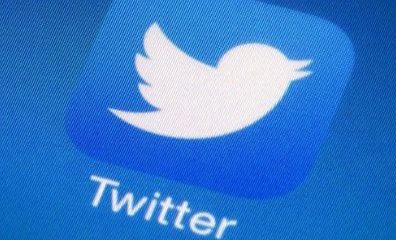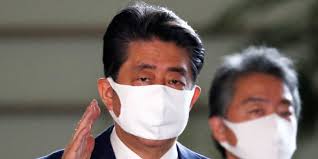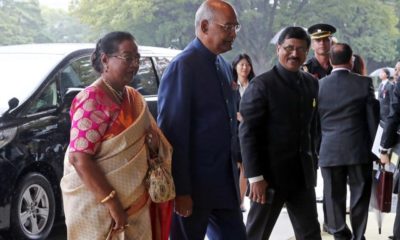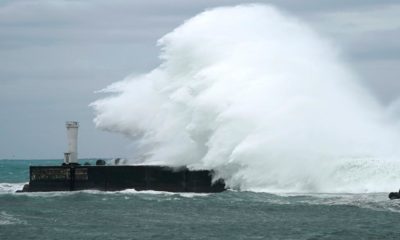World
Japan PM in Hawaii for historic Pearl Harbor visit
Hawaii: Japanese Prime Minister arrived in Hawaii on Monday, one day ahead of his visit to Pearl Harbor, the US naval base attacked by the Japanese in 1941 resulting in the deaths of 2,403 Americans.The two-day trip’s main highlight is the visit to the USS Arizona Memorial with President Barack Obama, making Abe the first Japanese leader to visit the memorial to the battleship that was sunk on December 7, 1941, the Japan Times reported on Tuesday.
The late Prime Minister Shigeru Yoshida visited Pearl Harbor in 1951, but before the memorial site was built. Two other postwar premiers, Ichiro Hatoyama and Abe’s grandfather, Nobusuke Kishi, visited the US Pacific Command at Pearl Harbor in the 1950s, government officials have confirmed.”Together with President Obama, I would like to express to the world this pledge for the future and the value of reconciliation,” Abe told reporters before leaving Japan.
The visit comes seven months after Obama became the first sitting president to visit a park in Hiroshima dedicated to the estimated 200,000-plus people who were killed when the US dropped two atomic bombs on that city and Nagasaki in August 1945.After arriving on Monday morning at the Hickam Air Force base here, which Japanese fighter planes strafed on the morning of December 7, 1941, Abe spent the day visiting the cemeteries of US servicemen killed in the Pacific War and Japanese immigrants to Hawaii, as well as a memorial to Japanese students and crew who perished on the Ehime Maru training ship when it sank off Oahu in a collision with a surfacing US submarine.
Abe is scheduled to stop by a memorial dedicated to Lt. Fusata Iida, who crashed his airplane on a hillside during the December 7, 1941, attack in what Americans later called Japan’s first kamikaze suicide attack of the war.The Prime Minister also laid a wreath at the National Memorial Cemetery of the Pacific, where over 13,000 soldiers and sailors who died during the Pacific War were laid to rest. Foreign Minister Fumio Kishida and Defense Minister Tomomi Inada are accompanying Abe on his trip, which concludes after a last meeting with Obama and their joint visit to the USS Arizona Memorial on Tuesday.
World
Lockdowns in China Force Urban Communities to Defy Censorship and Vent Frustration Online

Shanghai’s rich middle class is leading a wave of online dissent over the strict and prolonged lockdowns imposed in various parts of the country. Chinese internet censorship is struggling as patience is wearing thin in many urban centers, coming up with creative forms of online protests.
Social Media Posts Revealing Lockdown Tension in Shanghai
Drawn-out lockdowns are nothing new in China as authorities insist with the nation’s zero-Covid policy since the start of the pandemic. Currently over This time around, however, metropolitan areas like Shanghai are increasingly difficult to keep quiet, given that its more than 25 million residents have seen weeks of total isolation along with food shortages and many other service interruptions.
Dozens of towns and reportedly over 300 million Chinese citizens have been affected by lockdowns of different severity. As expected, urban netizens have been most outspoken over their difficulties by finding creative ways to get around state censorship and bans placed on topics, news comments and spontaneous campaigns.
Shanghai residents have been using mobile proxies and hijacking seemingly unrelated hashtags to talk about healthcare issues, delivery failures and the overall severity of their situation. The “positive energy” that the Chinese government wants to transmit during the recent prolonged series of lockdowns does not come naturally to those counting food supplies and online censors are working hard to filter words, trending topics and undesired social media sharing.
WeChat groups and message threads are under constant monitoring. Posts questioning the zero-Covid approach have been quickly deleted, including by leading Chinese health experts like Dr. Zhong Nanshan. Video footage is soon censored and protests and investigations are quickly made to disappear.
Where this has not worked, officials have exposed banners with warnings and outright threats like “watch your own mouth or face punishment”, while drones have been patrolling the city skies. Yet, if anything, this has led to further tensions and unspoken confrontation with Shanghai’s educated and affluent middle class.
Creative Online Solutions Harnessing Civic Energy
Announcements by Chinese social media that they would be publishing the IP addresses of users who “spread rumors” have not helped either. Tech industry research has shown that much of Asia’s tech-savvy population has a habit of using mobile proxies and other privacy tools, quickly finding workarounds to browse the internet freely and talk to the world about the hottest topics.
The sheer volume of forbidden posts is already a challenge for the very censorship system, experts explain. Unable to track all trending hashtags, state workers overlook topics that speak about the US, Ukraine or other popular news. Linking human rights elsewhere to their situation, Chinese online dissidents establish their informal channels and “hijack” the conversation to share personal or publicly relevant information about the Covid suppression in their town.
Sarcastic and satirical posts still dominate. Others hope to evade the censors by replacing words from famous poems or the national anthem. One thing is certain – social media, when harnessed with the right creativity, has proven its ability to mount pressure on the government in even some of the most strictly controlled tech environments like China.






















